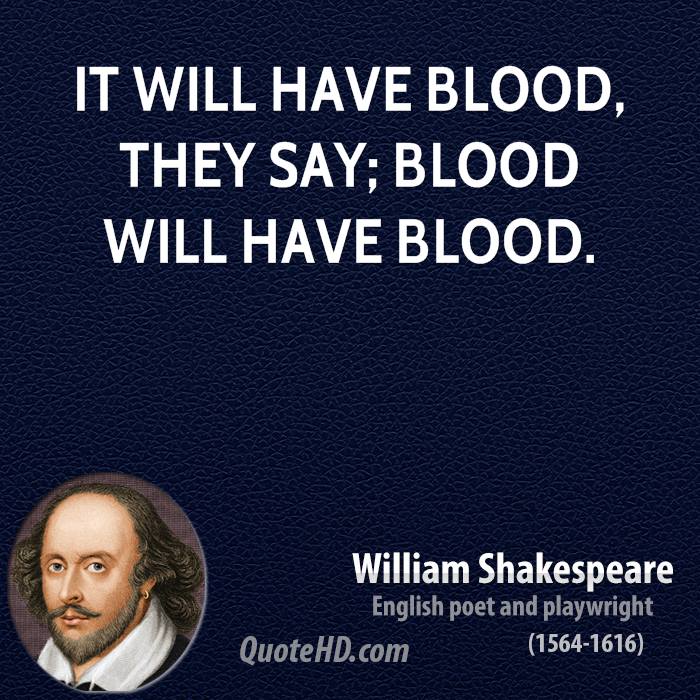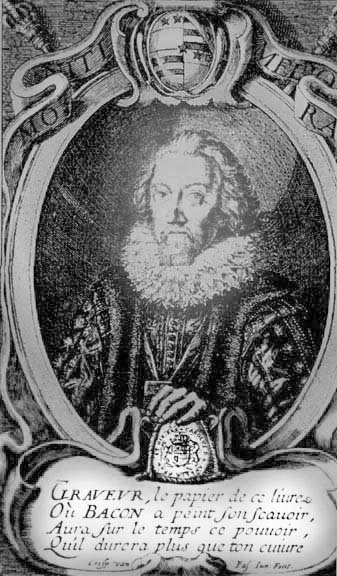The requirements of Lord Verulam’s biliteral cipher are fully met in scores of volumes printed between 1590 and 1650 and in some printed at other times. An examination of the verses by L. Digges, dedicated to the memory of the deceased “Authour Maister W. Shakespeare,” reveals the use of two fonts of type for both capital and small letters, the differences being most marked in the capital T‘s, N‘s, and A‘s, (Seethe First Folio.) The cipher has been deleted from subsequent editions.
The presence of hidden material in the text is often indicated by needless involvement of words. On the sixteenth unnumbered page of the 1641 edition of Du Bartas’ Divine Weeks is a boar surmounting a pyramidal text. The text is meaningless jargon, evidently inserted for cryptographic reasons and marked with Bacon’s signature–the hog. The year following publication of the First Folio of Shakespeare’s plays in 1623, there was printed in “Lunæburg” a remarkable volume on cryptography, avowedly by Gustavus Selenus. It is considered extremely probable that this volume constitutes the cryptographic key to the Great Shakespearian Folio.
Peculiar symbolical head- and tail-pieces also mark the presence of cryptograms. While such ornaments are found in many early printed books, certain emblems are peculiar to volumes containing Baconian Rosicrucian ciphers. The light and dark shaded A is an interesting example. Bearing in mind the frequent recurrence in Baconian symbolism of the light and dark shaded A and the hog, the following statement by Bacon in his Interpretation of Nature is highly significant: “If the sow with her snout should happen to imprint the letter A upon the ground, wouldst thou therefore imagine that she could write out a whole tragedy as one letter?”
The Rosicrucians and other secret societies of the seventeenth century used watermarks as mediums for the conveyance of cryptographic references, and books presumably containing Baconian ciphers are usually printed upon paper bearing Rosicrucian or Masonic watermarks; often there are several symbols in one book, such as the Rose Cross, urns, bunches of grapes, and others.
At hand is a document which may prove a remarkable key to a cipher beginning in The Tragedy of Cymbeline. So far as known it has never been published and is applicable only to the 1623 Folio of the Shakespearian plays. The cipher is a line-and-word count involving punctuation, especially the long and short exclamation points and the straight and slanting interrogation points. This code was discovered by Henry William Bearse in 1900, and after it has been thoroughly checked its exact nature will be made public.
No reasonable doubt remains that the Masonic Order is the direct outgrowth of the secret societies of the Middle Ages, nor can it be denied that Freemasonry is permeated by the symbolism and mysticism of the ancient and mediæval worlds. Sir Francis Bacon knew the true secret of Masonic origin and there is reason to suspect that he concealed this knowledge in cipher and cryptogram. Bacon is not to be regarded solely as a man but rather as the focal point between an invisible institution and a world which was never able to distinguish between the messenger and the message which he promulgated. This secret society, having rediscovered the lost wisdom of the ages and fearing that the knowledge might be lost again, perpetuated it in two ways: (1) by an organization (Freemasonry)
A CRYPTIC HEADPIECE.
From Ralegh’s History of the World. Many documents influenced by Baconian philosophy–or intended m conceal Baconian or Rosicrucian cryptograms–use certain conventional designs at the beginning and end of chapters, which reveal to the initiated the presence of concealed information. The above ornamental has long been accepted as of the presence of Baconian influence and is to be found only in a certain number of rare volumes, all of which contain Baconian cryptograms. These cipher messages were placed in the books either by Bacon himself or by contemporaneous and subsequent authors belonging to the same secret society which Bacon served with his remarkable knowledge of ciphers and enigmas. Variants of this headpiece adorn the Great Shakespearian Folio (1623); Bacon’s Novum Organum (1620); the St. James Bible (1611); Spencer’s Faerie Queene (1611); and Sir Walter Ralegh’s History of the World (1614) (See American Baconiana.)
THE DROESHOUT PORTRAIT OF Shakespeare.
From Shakespeare’s Great Folio of 1623. There are no authentic portraits of Shakespeare in existence. The dissimilarities the Droeshout, Chandos, Janssen, Hunt, Ashbourne, Soest, and Dunford portraits prove conclusively that the artists were unaware of Shakespeare’s actual features. An examination of the Droeshout portrait discloses several peculiarities. Baconian enthusiasts are convinced that the face is only a caricature, possibly the death mask of Francis Bacon. A comparison of the Droeshout Shakespeare with portraits and engravings of Francis Bacon demonstrates the identity of the structure of the two faces, the difference in expression being caused by lines of shading. Not also the peculiar line running from the ear down to the chin. Does this line subtly signify that the face itself a mask, ending at the ear? Notice also that the head is not connected with the body, but is resting on the collar. Most strange of all is the coat: one-half is on backwards. In drawing the jacket, the artist has made the left arm correctly, but the right arm has the back of the shoulder to the front. Frank Woodward has noted that there are 157 letters on the title page. This is a Rosicrucian signature of first importance. The date, 1623, Plus the two letters “ON” from the word “LONDON,” gives the cryptic signature of Francis Bacon, by a simple numerical cipher. By merely exchanging the 26 letters of the alphabet for numbers, 1 became A, 6 becomes F, 2 becomes B, and 3 becomes C, giving AFBC. To this is added the ON from LONDON, resulting in AFBCON, which rearranged forms F. BACON.

Moe is the founder of GnosticWarrior.com. He is a father, husband, author, martial arts black belt, and an expert in Gnosticism, the occult, and esotericism.





![How the South Saxons received Eadbert and Eolla, and the West Saxons, Daniel and Aldhelm, for their bishops; and of the writings of the same Aldhelm [705 A.D.] | Book 5 | Chapter 17 How the South Saxons received Eadbert and Eolla, and the West Saxons, Daniel and Aldhelm, for their bishops; and of the writings of the same Aldhelm [705 A.D.] | Book 5 | Chapter 17](https://www.gnosticwarrior.com/wp-content/plugins/contextual-related-posts/default.png)